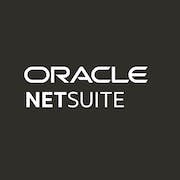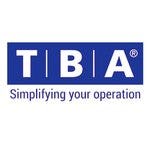Looking for reliable warehouse management software? Check out our comprehensive buyer's guide. Boost your productivity and streamline your operations now!
Efficient warehouse management is key to success. With increased demand for faster delivery times and higher accuracy, the right software can make all the difference. But with a wide variety of options on the market, choosing the best warehouse management solution for your business can be a daunting task. That's why we've created this guide to help you navigate the world of WMS and find the perfect fit for your needs. In this guide, we will explore the features and benefits of various WMS solutions, as well as provide tips for evaluating and selecting the best tool for your business. Whether you are a small business owner or part of a large enterprise, this guide will help you make an informed decision and take your warehouse management to the next level.
What is warehouse management software?
This is a powerful tool used by organizations to manage their inventory and warehouse operations effectively. It is a software solution designed to optimize warehouse functionality by automating processes such as receiving and storing products, tracking inventory levels, and order fulfillment. The software ensures that material handling and warehouse operations are streamlined to increase efficiency and reduce operating costs. It allows organizations to control and track their inventory in real-time, optimizing warehouse space and ensuring goods are delivered on time.
Common use cases for a warehouse management solution include:
- Inventory control and tracking: The software helps organizations track and manage their inventory, including receiving and stocking products, tracking inventory levels in real-time, and managing order fulfillment.
- Order management: It automates order fulfillment processes, including picking, packing, and shipping, resulting in faster order delivery and improved customer satisfaction.
- Labor management: It can help organizations manage their workforce more efficiently, utilizing labor resources effectively and reducing unnecessary expenses.
- Data visibility and reporting: A warehouse management system provides real-time data visualization and reporting capabilities, allowing organizations to identify performance trends and make data-driven decisions.
Companies across a wide range of industries, including manufacturing, retail, logistics, and e-commerce, use warehouse management software. API has been a phenomenon that has been a part of the logistics industry and encouraged 75% of IT operations plants to move towards warehouse management systems. It is particularly useful for businesses dealing with high volumes of inventory, labor-intensive workflows, and complex supply chain operations.
What benefits does a warehouse management tool come with?
This indispensable tool is vital to have as it has the ability to manage goods efficiently and effectively, more so making it much easier to keep track of products from the moment they enter the warehouse to the moment they leave.
Here are some of the main benefits of using this system:
- Improved inventory accuracy: With warehouse management software, businesses can achieve an unprecedented level of inventory accuracy. By using real-time data, businesses can stay up-to-date on the location and quantity of all their products. This enables businesses to make informed decisions and anticipate supply chain issues before they occur.
- Increased efficiency: By automating many warehouse processes, WMS software increases the efficiency of warehouse operations. For instance, businesses can save time and streamline processes by automating receiving, stocking, and shipping procedures. By using mobile devices and barcode scanning technology, employees can easily locate products, reducing the time needed to complete tasks.
- Enhanced customer service: By using a WMS system, businesses can provide faster, more reliable delivery of goods and services, resulting in enhanced customer service. With real-time inventory data, businesses can quickly identify and resolve supply chain issues and ensure their customers receive their orders in a timely manner.
- Lower costs: By optimizing inventory levels and increasing efficiency, businesses can save on labor costs, reduce inventory carrying costs, and minimize the expense of lost or misplaced goods. By using WMS software, businesses can also prevent overstocking, which minimizes excess inventory and the expenses that come with it.
- Better decision-making: A WMS solution provides businesses with a wealth of data that can be used to make informed decisions. By using real-time inventory data and advanced analytics, businesses can gain insights into their supply chain, identify inefficiencies, and optimize processes.
The 10 key features of warehouse management software
Warehouse management software has become a vital part of modern-day business operations. It enables organizations to manage inventory and track goods throughout the supply chain, streamlining the process and increasing efficiency. While there are several features that different warehouse programs may offer, here are 10 key common features that are essential:
1. Inventory management: It enables a company to track inventory levels, orders, sales, and deliveries, ensuring that inventory is properly organized and managed.
2. Barcode scanning: Using barcode scanners with a warehouse management program makes tasks such as receiving, picking, shipping, and counting of inventory faster, accurate, and more efficient.
3. Order fulfillment: The system should have the ability to manage and fulfill orders, including picking, packing, and shipping while also allowing for easy tracking of orders in real-time.
4. Real-time visibility: With real-time visibility of your inventory levels, you can make better decisions, adjust stock levels based on demand, and reduce out-of-stock situations.
5. Reporting and analysis: Warehouse management software that allows for reporting and analysis gives users the ability to identify trends in sales, inventory levels, orders, and much more.
6. Integration: A good warehouse management system should be able to integrate with other software systems, such as accounting and enterprise resource planning (ERP) systems, streamlining business operations.
7. Supply chain visibility: It should provide supply chain visibility and allow for end-to-end tracking enabling you to trace the product from the point of origin to the end-point.
8. Accessibility: It should be accessible from anywhere via mobile devices or web browsers, allowing employees to work remotely or on-the-go.
9. Security: Warehouses contain valuable inventory and customer information; the system should include security features such as password protection and restricted access levels to safeguard against cyber threats.
10. Scalability: As businesses expand, so do inventory levels, order volumes, and supply chain complexity. The warehouse management system must be able to scale up/down to accommodate inventory growth or any operational changes.
Having a warehouse management system that includes these features will simplify the tracking of inventory and enhance overall supply chain management for any business organization.
Key considerations when purchasing a warehouse management system
Here are some of the essential factors to consider before purchasing a warehouse management application.
1. Scalability
Your solution should be scalable to grow with your business. Choose one that can accommodate changes in your inventory, order volume and workflow over time. It is important to ensure that the vendor provides updates and add-ons when your organization grows.
2. Integration capability
It should be able to integrate seamlessly with other systems, from ERP apps and accounting systems to shipping programs. This integration can help eliminate manual data entry and increase efficiency by automating processes.
3. User Interface
A complex and confusing user interface can be an obstacle to using the software effectively. Select a user-friendly and intuitive WMS that is easy to learn and navigate. Training new staff members will require less time, saving costs in the long run.
4. Accurate tracking and management
The warehouse management software should efficiently help with the tracking of inventory levels and movement, and clearly highlight items that need to be replenished. It should also provide for real-time updates to reduce inventory discrepancies and errors.
5. Cost comparisons
There are many options on offer with warehouse management software and weighing the pros and cons of each can be tedious; however, it is important to compare costs and determine which solution offers the most value for the business.
6. Technical support
It is imperative to ensure that technical support is provided and readily available in the event of any software issues.
7. Security
When assessing prospective warehouse tool, it is important to evaluate data security and disaster recovery strategies. Your organization’s data must be secure, backed up regularly and protected against accidental deletion, data breaches, and natural disasters.
Choosing the right solution requires companies to understand their unique requirements and what they hope to achieve from the purchase.
Industry trends for warehouse management software
Warehouse management software systems have come a long way over the last few years, and 2024 promises to push things forward even further. The continued rise of e-commerce has put enormous pressure on supply chain operations to become more efficient, while customers demand ever-faster and more eco-friendly delivery options. This has made it critical for warehouse management systems to incorporate the latest technologies to keep pace with evolving demands.
Gamification, automation, robotics, and pick-to-light systems are just a few of the technologies that are being incorporated into such systems to increase efficiency and reduce cost. Alongside this, predictive analytics and modeling software are making a significant impact on supply chain optimization, helping companies to make informed decisions around inventory and space management.
As we move towards 2024 and beyond, it is clear that businesses that are embracing smart warehousing solutions will be at a competitive advantage, delivering better experiences, improving sustainability, and reducing costs. The rapid growth of warehouse robotics is evident in the 18% year-over-year increase in testing.
Conclusion
In conclusion, warehouse management software stands as the cornerstone of modern logistics operations, revolutionizing how businesses manage their inventory, streamline processes, and optimize efficiency. Its sophisticated capabilities, from real-time tracking to predictive analytics, empower organizations to adapt swiftly to dynamic market demands while ensuring seamless coordination across supply chain networks. As industries continue to evolve, embracing innovative technologies like warehouse solution is essential for staying competitive and unlocking new levels of productivity and profitability in the ever-changing landscape of global commerce. According to McKinsey, investment in warehouse automation will grow at 3 to 5% by 2025, underscoring the increasing recognition of the pivotal role such technologies play in driving operational excellence and meeting the challenges of tomorrow's logistics landscape.










